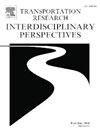泊位分配与码头起重机综合管理的节能模型
IF 3.9
Q2 TRANSPORTATION
Transportation Research Interdisciplinary Perspectives
Pub Date : 2025-04-24
DOI:10.1016/j.trip.2025.101429
引用次数: 0
摘要
分配泊位和分配以及调度码头起重机(qc)的挑战被认为是港口运营中最重要的问题之一,因为它涉及到提高效率的许多权衡。本研究将货柜船舶的服务优先级、QC预防性维修和能源消耗这三种作业条件纳入研究,探讨这一复杂的QC调度问题。这些方面对于确保起重机以安全和可持续的方式有效使用至关重要。该问题涉及两个主要目标:最小化集装箱船舶的装卸和等待成本以及QC的能源成本,最大化绿色或可再生能源驱动的QC的利用率。为了解决这一多目标问题,本文采用了三种基于人口的多目标元启发式算法——nsga - ii、MOGWO和mopso,并对它们的性能进行了比较分析。将它们的性能与各种问题规模进行比较,以衡量它们在当前条件下在服务时间最小化和最大起重机利用率目标之间取得平衡的能力。用这两种算法定义并实现了几个不同维度的数值实验。结果分析给出了一个整体的视角,两种算法在满足现代集装箱码头物流的苛刻要求方面显示了各自的价值和优缺点。研究结果有助于制定更有效、可靠和可持续的策略来优化泊位资源管理。本文章由计算机程序翻译,如有差异,请以英文原文为准。
Energy-Efficient model for integrated berth allocation and quay crane management
The challenge of allocating berths and assigning as well as scheduling quay cranes (QCs) is identified as one of the most important concerns of port operations, given that it involves many trade-offs for the improvement of efficiency. This research has explored this complex problem of QC scheduling with the incorporation of three operational conditions which have less attention in the literature: service priority of container vessels, QC preventive maintenance, and energy consumption. Such aspects become critical to ensuring that cranes are used effectively and in a safe and sustainable manner. The problem involves two main objectives: minimizing the handling and waiting costs of container vessels along with the energy costs of QC, and maximizing the utilization rate of QC powered by green or renewable energy. To address this multi-objective problem, three population-based multi-objective metaheuristics—NSGA-II, MOGWO, and MOPSO—are employed and comparatively analyzed in terms of their performance. Their performances are compared to various problem sizes with regard to their ability to produce a balance between service time minimization and maximum crane utilization objectives under prevailing conditions. Several numerical experiments in different dimensions are defined and implemented with both algorithms. The results analysis gives an overall perspective, while both algorithms show their value and strong points and weaknesses in meeting demanding requirements of modern container terminal logistics. The findings help in giving insights into developing more efficient, reliable, and sustainable strategies for optimizing berth resource management.
求助全文
通过发布文献求助,成功后即可免费获取论文全文。
去求助
来源期刊

Transportation Research Interdisciplinary Perspectives
Engineering-Automotive Engineering
CiteScore
12.90
自引率
0.00%
发文量
185
审稿时长
22 weeks
 求助内容:
求助内容: 应助结果提醒方式:
应助结果提醒方式:


